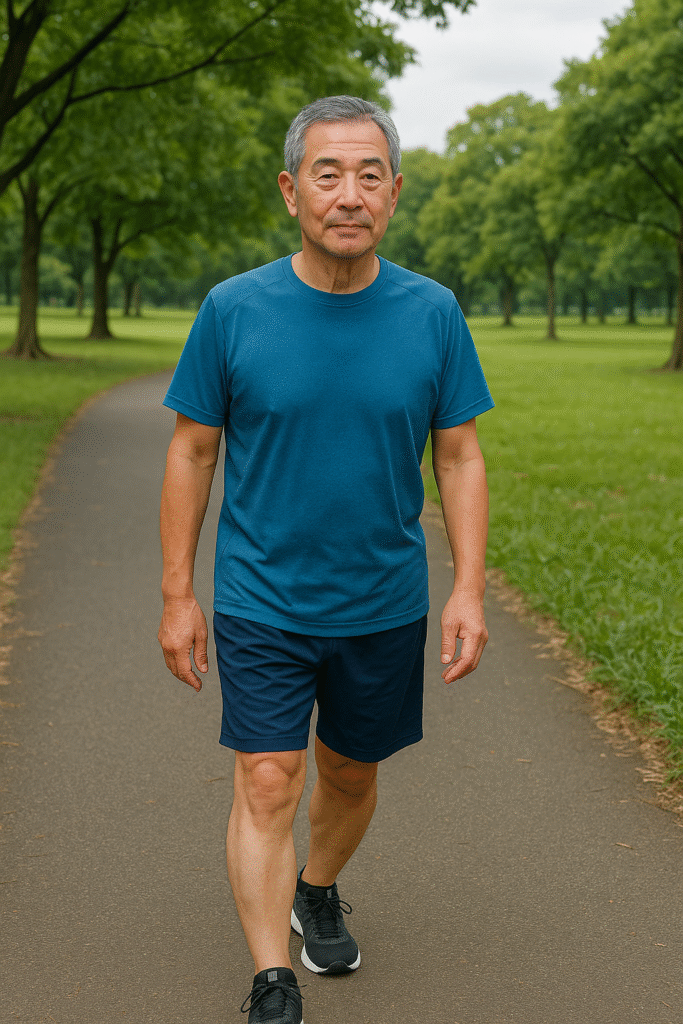Japanese Walking: Mindful Movement for Modern Life

In an age where everything seems to sprint forward—emails stacking up, screens glowing endlessly, our calendars brimming with commitments—one of the most profound forms of wellness is also one of the simplest: walking.
This isn’t a breakneck race on a treadmill or a grueling cardio challenge. Instead, Japanese walking invites you to slow down, to tune in, and to make each step an experience in itself. It’s a gentle antidote to the relentless pace of modern life—a way to harmonize both body and mind, one footfall at a time.
Japanese Walking: Mindful Movement for Modern Life
What Is Japanese Walking?
At first glance, Japanese walking might seem deceptively simple. But beneath the surface lies a practice steeped in cultural wisdom and biomechanical precision. It draws inspiration from techniques such as shinpo walking, as well as the fluid, mindful movements found in Japanese martial arts and traditional health rituals.
At its heart, Japanese walking embodies four essential principles:
- Upright posture
- Smooth, rolling steps
- Synchronized breathing
- Deep awareness of body and surroundings
With this approach, walking is no longer a mindless activity. Instead, it becomes a form of moving meditation, inviting you to reconnect with your body and surroundings—something that too often gets lost in the modern, distracted shuffle from point A to point B.
Why Is It Trending?
Why now? Why has this ancient-inspired practice found its way to the forefront of fitness trends in 2025? The answer lies at the intersection of several powerful shifts:
✅ A booming global wellness movement, where people crave holistic approaches to fitness and health.
✅ An increasing demand for low-impact, sustainable exercises that support longevity.
✅ Mounting research highlighting how movement combined with mindfulness fosters mental resilience.
✅ The viral ripple effect of social media, where influencers and fitness leaders showcase the beauty and benefits of Japanese walking in eye-catching clips and thoughtful reflections.
In other words, Japanese walking embodies exactly what today’s fitness seekers are craving: a practice that nurtures both body and mind—without requiring an expensive gym membership or high-tech gadgets.
The Benefits of Japanese Walking

1️⃣ Improved Posture & Alignment
Let’s face it: most of us spend far too much time hunched over screens, our posture slowly crumbling. Japanese walking offers a graceful counterbalance, training you to stand tall, align your spine, and cultivate an open, relaxed stance.
2️⃣ Joint Health & Mobility
The controlled, rolling motion of Japanese walking lubricates the joints and encourages natural, pain-free movement—perfect for those seeking exercise that protects rather than punishes the body.
3️⃣ Stress Reduction & Mental Clarity
When you coordinate your breath with each step, something magical happens: the nervous system shifts, stress dissolves, and a tranquil clarity emerges. It’s a moving meditation that can transform even the most hectic day.
4️⃣ Cardiovascular Health
Don’t let its gentleness fool you—mindful walking can boost circulation, enhance heart health, and encourage a consistent, sustainable fitness habit that lasts far beyond fleeting trends.
5️⃣ Enhanced Body Awareness
As your mind tunes in to the rhythm of your movement, you naturally develop heightened body awareness. Over time, this improves balance, coordination, and an intuitive understanding of how your body moves through space.
How to Practice Japanese Walking

The beauty of Japanese walking lies in its simplicity—you need no special gear, no gym, no elaborate training. Just your body, your breath, and an open mind.
Step 1: Set an Intention
Before you begin, pause. Why are you walking today? To calm your mind? To restore energy? To simply enjoy the act of moving? Set that intention clearly.
Step 2: Focus on Posture
- Stand tall. Imagine a string gently lifting the crown of your head toward the sky.
- Roll your shoulders back and down, allowing your chest to open.
- Engage your core just enough to support your spine without tension.
Step 3: Walk with Awareness
- Let your feet roll smoothly from heel to toe with each step.
- Keep your movements fluid and unhurried.
- Breathe in harmony with your steps—perhaps inhaling for three steps, exhaling for three.
- Stay present. Feel the ground beneath you, the air on your skin, the gentle rhythm of your breath and body.
Step 4: Practice Regularly
Begin with 10–15 minutes daily. With time, you may find yourself weaving this mindful practice into longer walks—or even transforming ordinary walks into moments of moving meditation.
Japanese Walking in Daily Life
One of the greatest gifts of Japanese walking is its versatility. You can bring this practice into countless everyday moments:
- On a quiet morning stroll
- During a midday break to refresh body and mind
- While exploring a new city or natural landscape
- As a restorative pause between screen-heavy work sessions
With Japanese walking, even mundane walks become opportunities for mindful presence and joyful movement.
Final Thoughts
In a world that often glorifies speed, Japanese walking reminds us of the profound value in slowing down. With each mindful step, we can cultivate not only physical vitality but also mental peace—a rare and precious gift in modern life.
So the next time you lace up your shoes, resist the urge to rush. Instead, breathe, tune in, and let your walk become a graceful dance of awareness. Experience the joy of mindful movement, the Japanese way.
Ready to begin? The path awaits—one conscious step at a time.

